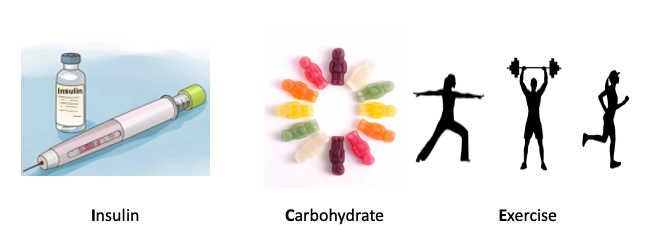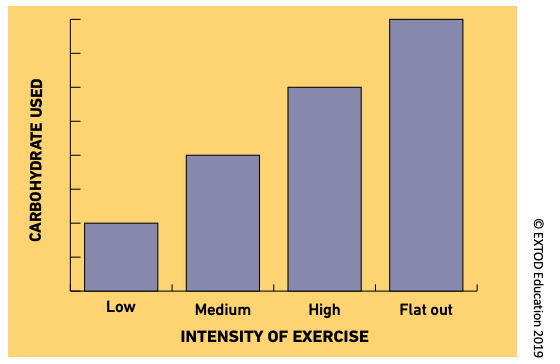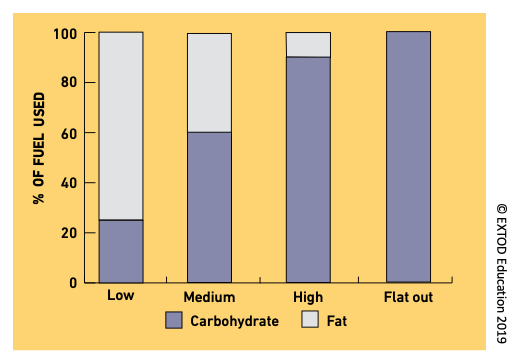 Advice for Professionals
Advice for Professionals

Strategies for managing glucose during exercise - ICE.
In simple terms there are three ways that glucose can be managed during exercise. The easy way to remember these is through the mnemonic ‘ICE’.
I | Insulin adjustment |
C | Carbohydrate for exercise |
E | Exercise - changing type or intensity |
Insulin adjustment for exercise
The liver is main source for carbohydrate that is used when exercising. When insulin levels are high, the liver is prevented from releasing glucose (see glucose control during exercise). High insulin levels during exercise could therefore lead to a mismatch between the glucose produced by the liver and that used by the muscles. This will result in a fall in circulating blood glucose falling during exercise.
Ideally patients should exercise with as little insulin around as possible. Changes can be made to the quick-acting (bolus) or the background (basal) insulin to help with this. What changes are made to insulin will depend on the type, intensity and length of the exercise and on what time of day the exercise is carried out.
To find out about this go to
- Changes in insulin for exercise for people on multiply daily injections.
- Changes in insulin for exercise for people on Insulin pumps.
Carbohydrate for exercise
The two main fuels used during exercise are fats and carbohydrates (in the form of glucose). People with Type 1 Diabetes burn fat normally during exercise; it is only the production of carbohydrate that they have problems with.
The exercise carbohydrate value of an exercise is the amount of carbohydrate that is used during an exercise. The higher the exercise’s intensity, the more carbohydrate is burned per minute see figure 1 below.

In addition, the longer an exercise goes on for the more carbohydrate is used and the more reliant the system becomes on plasma glucose. See figure 2 and 3 below.


The amount of carbohydrate needed will also depend on the age, sex, weight and fitness of the person performing the exercise.
When using carbohydrates for exercise, the aim is to take all the carbohydrate needed to perform the particular exercise so that the glucose remains stable across the exercise.
To find out more, go to
- Carbohydrates for exercise for people on multiple daily injections section of this website.
- Carbohydrates for exercise for people on insulin pumps section of this website.
Exercise adjustment for exercise
Different exercise regimes have different effects on blood glucose concentration (see Types of exercise and their effects on blood glucose section of this website). This knowledge can be used to help control glucose during exercise. Changing the order in which exercise is done or adding a different type of exercise can help with glucose control during exercise.
To find out more about this go to exercise adjustments for exercise.
Summary
Each of these strategies has its pros and cons. The table below is a summary of the pros and cons. This may be helpful in deciding which strategy you choose to recommend first to your patients
Strategy | Pros | Cons |
Insulin adjustment for exercise | Reduces hypoglycaemia during and following exercise, reduces carbohydrate requirement | Needs planning. Not helpful for spontaneous exercise. Changing bolus insulin dose is not helpful if exercising 2 hours outside the bolus. |
Carbohydrate for exercise | Useful for unplanned exercise | May not be possible with some exercises. Not helpful where weight control important. May over-replace so blood glucose goes too high. |
Exercise adjustment for exercise | Useful for unplanned exercise | May not be possible with some exercises. May not always have desired effect, lowering glucose or raising glucose more than needed. |
